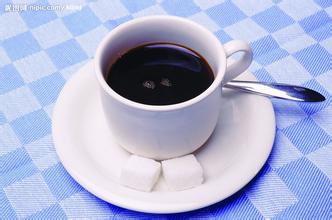Introduction to the flavor and taste of coffee from Incht Manor, Guatemala.
The capital, Guatemala City, is the largest city in Guatemala and the city of Central America. Area
Map of Guatemala
Map of Guatemala
996 square kilometers with a population of 3.1 million (2010). Founded in 1524. Due to repeated damage by the earthquake, he moved to his present site in 1776. How low buildings are in the city. It has been the capital since 1779. It was the capital of the Central American Federation from 1823 to 1838. A distribution center for coffee, corn, wheat and other agricultural products. Has more than half of the country's industries, mainly cement, wood processing, textile, tobacco, food processing and so on. Transportation hub, the railway to the northeast and southwest to the port of Barrios and San Jose respectively. There are universities (founded in 1676), academies of sciences, museums and so on. The Central American Common Market is headquartered here. There are monuments of Mayan culture on the outskirts of the city. Tourist centers include Lake Attila, the old capital of Old Guatemala, the ancient Mayan city of Tikal and some other famous cities such as Kesaltnango and Chichikas de Nango. Guatemala City is the national economic, cultural and transportation center. On the plateau of the southern volcanic area, 1493 meters above sea level, the climate is extremely mild, with flowers blooming all the year round, green grass and little seasonal change, so it has the laudatory name of "evergreen city". This government of Guatemala was formed in January 2012. The main members are: vice President Rosanna Baldetti, Foreign Minister Harold Cavalieros, Minister of the Interior Maurizio Lopez Bonillia, Minister of Defense Ulisses Noe Soedo Hilone, Minister of Finance Pavel Centrino, Minister of Transport and Infrastructure Guillermo Castillo, Minister of Education Cynthia del Aguila, Agriculture, The Minister of Animal Husbandry and Food Mario Aldana, the Minister of economy and Trade Sergio de la Torre Jimeno, the Minister of Public Health and Social Welfare Ludwig Ovalle, the Minister of Labour and Social Security Carlos Contreras, the Minister of Energy and Mining Eric Estuardo Achira de Essa, the Minister of Culture and Sports Jeronimo Lanserio, Environment and natural resources minister Luis Armando Zulita Tablada president of Guatemala Otto Perez Molina. Born in Guatemala City on December 1, 1950, entered in 1966
Otto Perez Molina
Otto Perez Molina
He studied at the Polytechnic Institute of Guatemala and then at the American School of the United States Army and the Inter-American Defense Institute. He was mainly responsible for military intelligence when he was in service. In 1982, he supported the then Defense Minister Oscar Mejia in launching a military coup that overthrew the government of Efrain Rios Mont. From 1993 to 1995, he served as Chief of staff of the Presidential Palace. In 1996, a peace agreement was signed on behalf of the military, ending a 36-year civil war. From 1998 to 2000, he served as a representative of the Defense Committee in Central America. He retired in January 2000, established the Patriotic Party in December 2001 and was elected a member of the National Assembly in 2004. He lost the presidential election in 2007. Elected President on November 6, 2011 through the second round of voting in the presidential election.
At present, some of the best quality coffee from Guatemala is exported to Japan, where each cup of coffee sells for $3 to $4. In order to revitalize its coffee industry, Guatemala has specially set up a special coffee association and gives maximum funding and attention to these high-quality coffee. These efforts will soon bear fruit. The real beneficiaries are not only those coffee growers, but also coffee lovers all over the world. The coffee produced in Guatemala is one of the top coffee in the world, because Guatemala is a high-altitude volcanic terrain. And these volcanoes are the ideal places to grow coffee. Compared with other varieties of coffee, critics prefer this mixed flavor coffee with spicy flavor. The extra hard coffee beans here are a rare good coffee with full grains, delicious taste and balanced acidity. In addition, its giant coffee beans have attracted a lot of attention in Guatemala.
Coffee was really introduced into Guatemala in 1750 by Father Jesuit, and the coffee industry was developed by German colonists at the end of the 19th century. Today, most of the coffee industry's production takes place in the south of the country. There are seven major coffee producing areas in Guatemala, and the flavor of coffee produced in each area is different, but to sum up, Guatemalan coffee shows a mild and mellow overall texture, elegant aroma, and special and pleasant acidity similar to fruit acid, becoming the aristocrat of coffee, among which Antigua Classic Coffee (AntiguaClassic) is highly recommended by global coffee connoisseurs.
Antigua is the oldest and most beautiful city in America. As early as 1543, Antigua was the capital of all colonial times in Central America, and the Government House of Spain was also set up here. The whole city of Antigua was destroyed after the great earthquake of 1773, so the capital was moved to Guatemala City. Antigua is about 40 kilometers west of Guatemala City. Colonial buildings were damaged by the earthquake, and the whole remains after the earthquake is a living museum of history.

Important Notice :
前街咖啡 FrontStreet Coffee has moved to new addredd:
FrontStreet Coffee Address: 315,Donghua East Road,GuangZhou
Tel:020 38364473
- Prev

Introduction to the bitter aroma of La Tisa Manor Coffee in Guatemala
Guatemala is located in the tropics, the northern and eastern coastal plains have a tropical rain forest climate, the southern mountains have a subtropical climate, the year is divided into two dry and wet seasons, with the wet season from May to October and the dry season from November to April of the following year. The narrow and fertile flatlands on the Pacific side of Guatemala have a tropical climate. The central plateau is also the cultural center of Guatemala, where the year-round temperature ranges from 1300 to 1800 meters.
- Next

Introduction to Kenyan Berman Manor Coffee with balanced and delicious acidity
Kenya is 582646 square kilometers across the equator, bordered by Somalia to the east, Ethiopia and the Republic of South Sudan to the north, Uganda to the west and Tanzania to the south. The southeast is bordered by the Indian Ocean, with a coastline of 536 kilometers. [3] the coastal areas are plains, and most of the rest are plateaus with an average elevation of 1500 meters. Mount Kenya, the highest peak in the Great Rift Valley of East Africa
Related
- Does Rose Summer choose Blue, Green or Red? Detailed explanation of Rose Summer Coffee plots and Classification in Panamanian Jade Manor
- What is the difference between the origin, producing area, processing plant, cooperative and manor of coffee beans?
- How fine does the espresso powder fit? how to grind the espresso?
- Sca coffee roasting degree color card coffee roasting degree 8 roasting color values what do you mean?
- The practice of lattes: how to make lattes at home
- Introduction to Indonesian Fine Coffee beans-- Java Coffee producing area of Indonesian Arabica Coffee
- How much will the flavor of light and medium roasted rose summer be expressed? What baking level is rose summer suitable for?
- Introduction to the characteristics of washing, sun-drying or wet-planing coffee commonly used in Mantenin, Indonesia
- Price characteristics of Arabica Coffee Bean Starbucks introduction to Manning Coffee Bean Taste producing area Variety Manor
- What is the authentic Yega flavor? What are the flavor characteristics of the really excellent Yejasuffi coffee beans?

